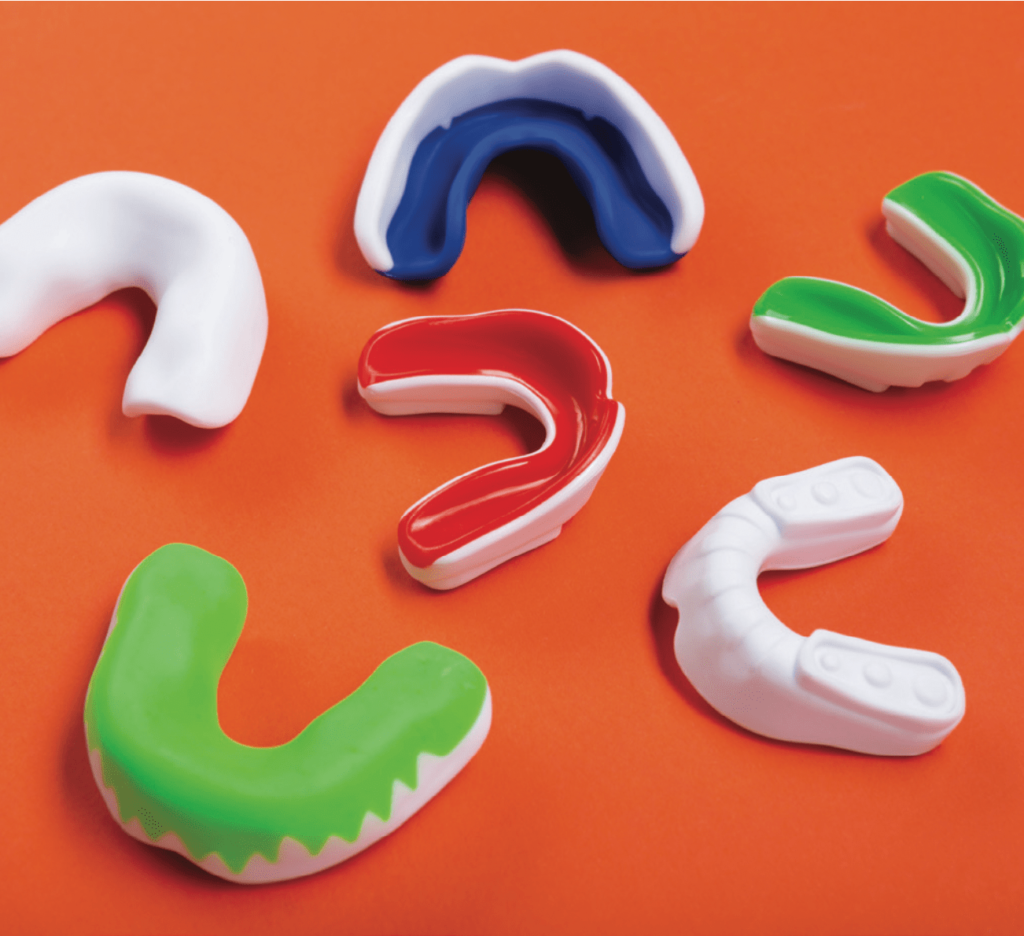More than 5 million teeth are knocked out each year in sports-related injuries but many of them can be prevented by wearing a properly fitted mouthguard.

What is a mouthguard?
A mouthguard is a flexible appliance that is worn during athletic and recreational activities to prevent injuries to the mouth and face, such as split lips, broken teeth and jaw fractures.
When should I wear a mouthguard?
You should wear a mouthguard whenever there is a chance of your head making contact with another participant or a hard surface. Mouthguards should be worn when par- ticipating in such activities as basketball, softball, football, wrestling, soccer, lacrosse, rugby, hockey, martial arts and skateboarding.
What type of mouthguard is best?
There are several types of mouthguards:
• Stock: The least expensive option, these ready-made guards are bulky and don’t fit well. Because they require
users to close their jaws to keep them place, speech and breathing may be difficult. They also may lead to soreness of the jaw muscles. A stock mouthguard will not help protect the face.
• Boil-and-bite: Thermoplastic, or boil-and-bite, mouth- guards are also available over the counter. This type of mouthguard is softened in hot water, placed in the mouth and shaped around the teeth using the fingers or tongue. They tend to have a loose fit and are not considered ade- quate protection by most dentists.
• Custom-made: Most dentists agree that a custom-made, pressure-laminated mouthguard provides the best protec- tion. Because your dentist makes it from a model of your teeth, this type of mouthguard provides a custom fit and higher comfort level.
You should wear a mouthguard whenever there is a chance of your head making contact with another participant or a hard surface.
How should I care for my mouthguard?
• After each use, brush your mouthguard with a toothbrush and cool water.
• Keep your mouthguard in a well-ventilated plastic storage box when you’re not using it. Your dentist will provide you with a case.
• Don’t leave your mouthguard in direct sunlight or in a hot car; heat can melt your mouthguard, altering the way it fits.
• Bring your mouthguard with you when you visit your dentist for your regular checkups. Your dentist can give it a thorough cleaning and check its structure and fit.
• Call your dentist if you have any concerns about your mouthguard.
© COPYRIGHT 2019 BY THE ACADEMY OF GENERAL DENTISTRY. ALL RIGHTS RESERVED.